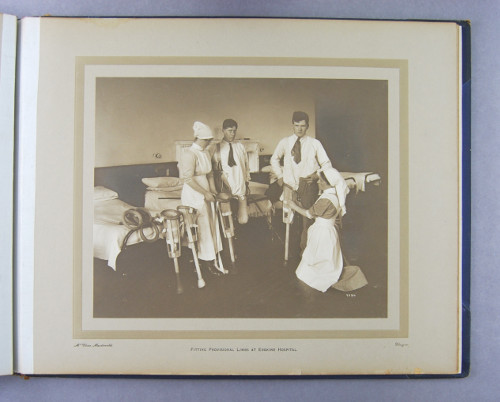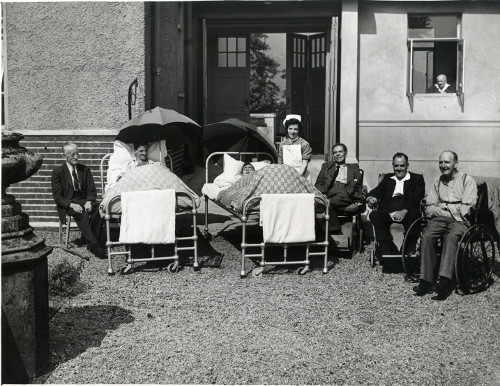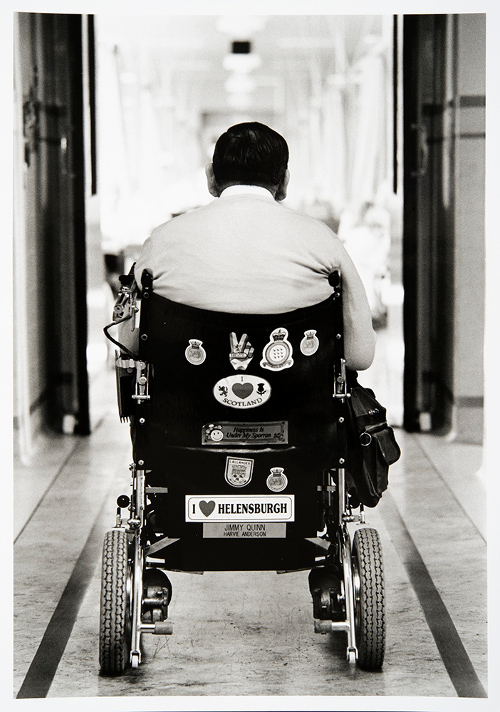Archives Hub feature for June 2017

June 2017 marks the 100th anniversary of the official opening of Erskine Hospital. Located in the west coast of Scotland, Erskine was founded in 1916 as the Princess Louise Scottish Hospital for Limbless Sailors and Soldiers, a military convalescence facility for servicemen who had lost limbs in the First World War. The creation of the hospital was a direct response to the need for specialised medical facilities to deal with the unprecedented number of injured and maimed service personnel returning from the battlefields, and for the last 100 years has continued to care for ex-Service men and women.
In 2015 the University of Glasgow received an award from the Wellcome Trust to catalogue and preserve the records of Erskine Hospital. The partnership came about as part of the University’s Great War project, and as part of Erskine’s centenary celebrations. It will ensure that material is preserved and accessible for researchers and outreach projects in perpetuity.

The Erskine Collection is vast in its scope – ranging from items intrinsically tied to the running of the hospital, such as minute books and admissions records, to items such as silk embroidered souvenir postcards sent during the First World War, or correspondence and loose photographs, the owner or subject of which may have been a resident at some point in time. While the administrative records are essential for documenting the running of the facility and tracing individual patients of Erskine, patient experiences, perspectives, and voices are also captured in an array of documents.
Admission Books show that by December 1917 the number of patients admitted to the hospital was 1,613, and of those 1,126 had been ‘discharged with limbs’. More than 2,145 ex-service pensioners from previous wars also attended Erskine to be fitted with new limbs or limb repairs. Between the opening in October 1916 and December 1919 over 400 major operations were performed.

The Princess Louise Scottish Hospital Rules for Patients give a taste of the patient experience during the 1920s. While Erskine provided long term care and rehabilitation for many, patients were expected to follow the strict practices enforced by the hospital staff. Activities such as gambling and smoking were restricted or even forbidden, and bed and meal times were strictly adhered to. However, Erskine was always intended to be more than just a hospital. In return for their co-operation with the rules of the Hospital, patients were given the opportunity to retrain and gain new skills through onsite workshops; classes were set up in basketry, shoemaking, tailoring, woodwork, hairdressing and commercial training, ensuring the men would have the opportunity to re-enter the workforce despite their disability upon being discharged from Erskine.
After the war the number of patients entering the hospital due to amputation naturally decreased. The Executive Committee shifted focus toward providing a permanent home for ex-servicemen requiring long term care.

As well as being a busy functioning hospital Erskine became a permanent home for paraplegic residents unable to live independently. Additionally in 1934, a convalescent holiday scheme was introduced which allowed ex-servicemen who had been ill and could not afford to pay for a holiday to come to Erskine for a break. In September 1946 the first of 50 cottages was built in the grounds of Erskine, allowing disabled men and their families to live near their place of work and close to the hospital facilities on which they depended.
During the 1960s and 1970s the patients of Erskine produced a magazine The Erskine Bugle. The Bugle ensured patients and staff could learn about events taking place throughout the hospital, and the poems, stories and letters submitted give a voice to those who stayed at Erskine during this period. The magazines offer a unique perspective into the community of Erskine, and serve as a worthy legacy to the patients and staff who created it.

The hospital continually expanded in the second half of the 20th century, with new wings being built in 1950, 1962, 1975, and the 1990s. However it was clear the 19th century manor house was no longer equipped to deal with the demand of the busy convalescence home. In 2000 the new state of the art facility was completed to provide long term residential care for veterans.
The partnership between Erskine and the University of Glasgow is ongoing, and regular accessions are expected, ensuring an impressively full record of the activities of the hospital, its staff, and its patients is reflected in the collection, from both World Wars and the National Service era, right through to the present day.

For more information on the Erskine archive, and the collections held at the University of Glasgow Archives and Special Collections, please visit:
http://www.gla.ac.uk/services/library/collections/medicalhumanities/erskine%20archive%20project/
http://www.gla.ac.uk/services/archivespecialcollections/
https://universityofglasgowlibrary.wordpress.com/category/archives-and-special-collections/
Katie McDonald
Archives and Special Collections Graduate Trainee
University of Glasgow
Related:
Explore the Records of Erskine Hospital Ltd, veterans charity collection (1916-2016) on the Archives Hub.
Browse all of the University of Glasgow Archive Services collections on the Archives Hub.
All images copyright the University of Glasgow and reproduced with the kind permission of the copyright holder.
